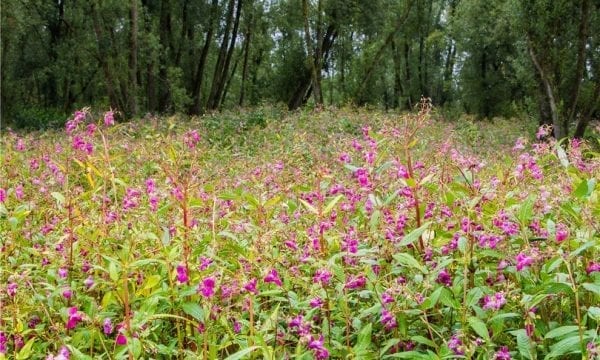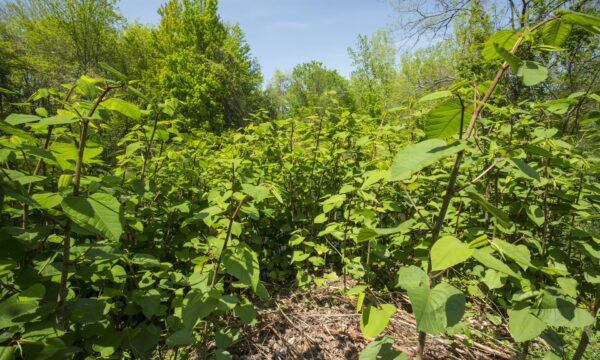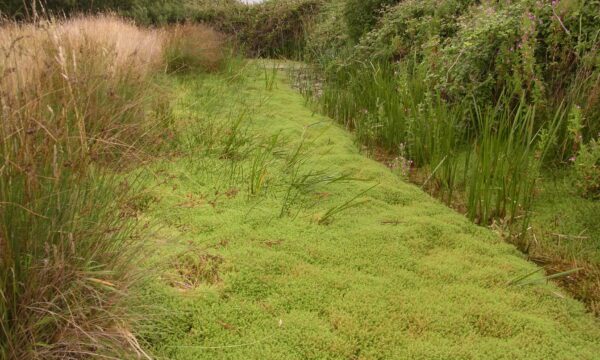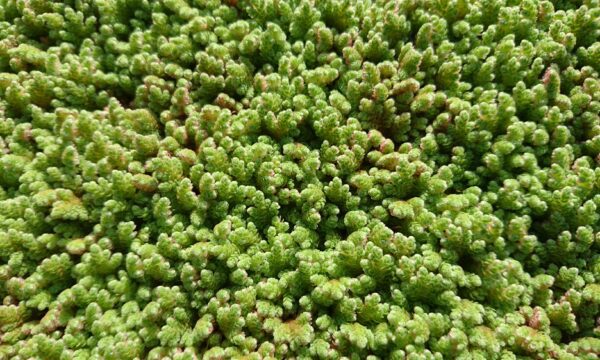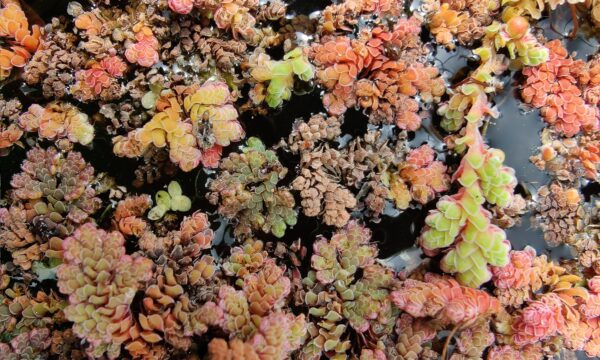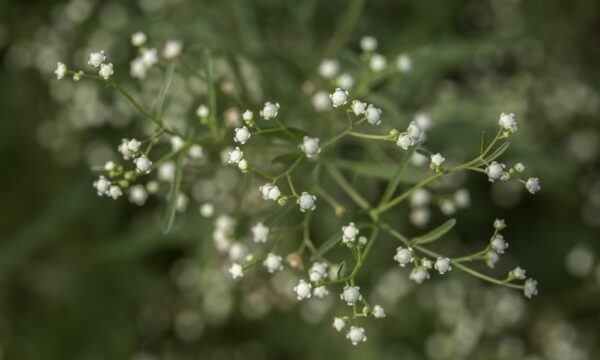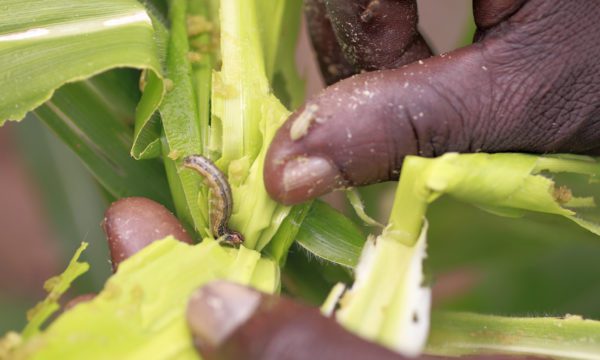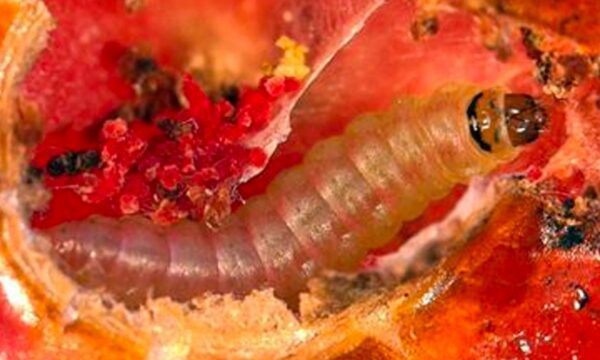The problem
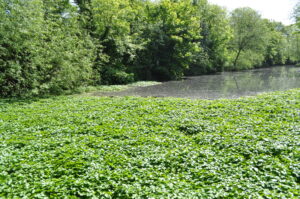
Native to the Americas and introduced in the 1980s through the ornamental aquatic trade, floating pennywort (Hydrocotyle ranunculoides) is a strong contender for the title of worst aquatic weed in the UK, having spread rapidly from garden ponds into our waterways.
Since 2014, it has been banned from sale. It is also illegal to cause floating pennywort to grow in the wild. Despite this, its fast, asexual growth and environmental adaptability has enabled the plant to continue to spread exponentially.
Floating pennywort forms dense mats of rounded leaves which float across the water’s surface, depleting oxygen levels and light for photosynthesis, threatening fish and invertebrates, and outcompeting our native water plants.
In addition to its negative environmental impacts, the economic costs of this species can be high. Losses in tourism revenue are caused through disrupted fishing, river navigation and water sports. The weed also impacts commercial fisheries and blocks pipes and pumps which damages waterworks and can lead to flooding. Across Great Britain and Europe, these costs are estimated to exceed £25 million per year.
The project
Following a series of scoping studies to its native range of Argentina, a project seeking to identify the safest and most effective biocontrol agent for floating pennywort started in 2011. Exploratory surveys identified a number of promising species associated with floating pennywort. After rejecting a number of natural enemies, a damaging weevil (Listronotus elongatus) was prioritized.
Research to date
In consultation with a steering committee of UK stakeholders and botanical experts, a comprehensive test plant list was developed and approved for the UK, against which the pennywort weevil should be tested.
Authorisation to export the weevil from Argentina and, subsequently, from Paraguay was successfully obtained in 2014 and 2019 respectively. The safety and effectiveness of the weevil was assessed in CABI’s quarantine facility through a series of established and internationally recognized testing protocols.
The weevil was found to be highly damaging and to significantly prefer the target weed, floating pennywort. Adult weevils feed on the leaves and lay their eggs in the plant petioles (the stalks that attach leaves to plant stems). Their larvae mine the plant petioles for food and causing the plant to collapse.
A comprehensive scientific dossier (a pest risk analysis) detailing field observations, all of CABI’s research and the supporting work of collaborators in Argentina was submitted to the UK government regulators. This was followed by an external review and assessment by the Plant Health Risk Group.
Following comprehensive peer review and consultation, the floating pennywort weevil was given ministerial approval for release into the wild. With financial support from a range of stakeholders, releases began in earnest in 2022 and continue to be rolled out across the country. It is hoped that this agent will contribute to the safe and sustainable control of the invasive floating pennywort, forming an integral part of the national Great Britain Floating Pennywort Strategy, aimed at alleviating the threat posed to our waterbodies.
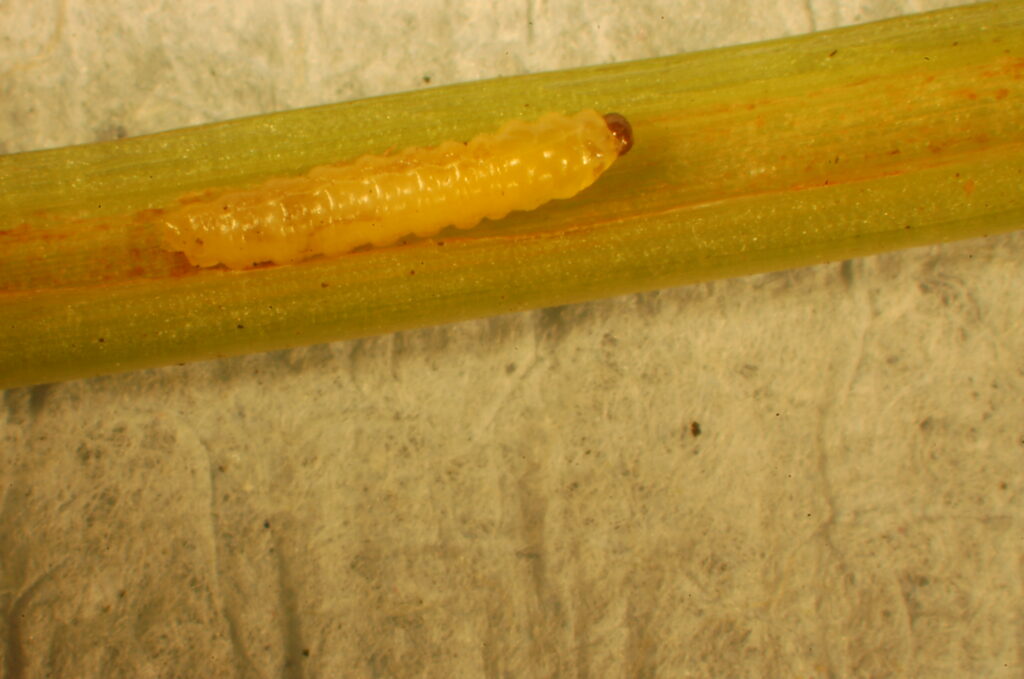
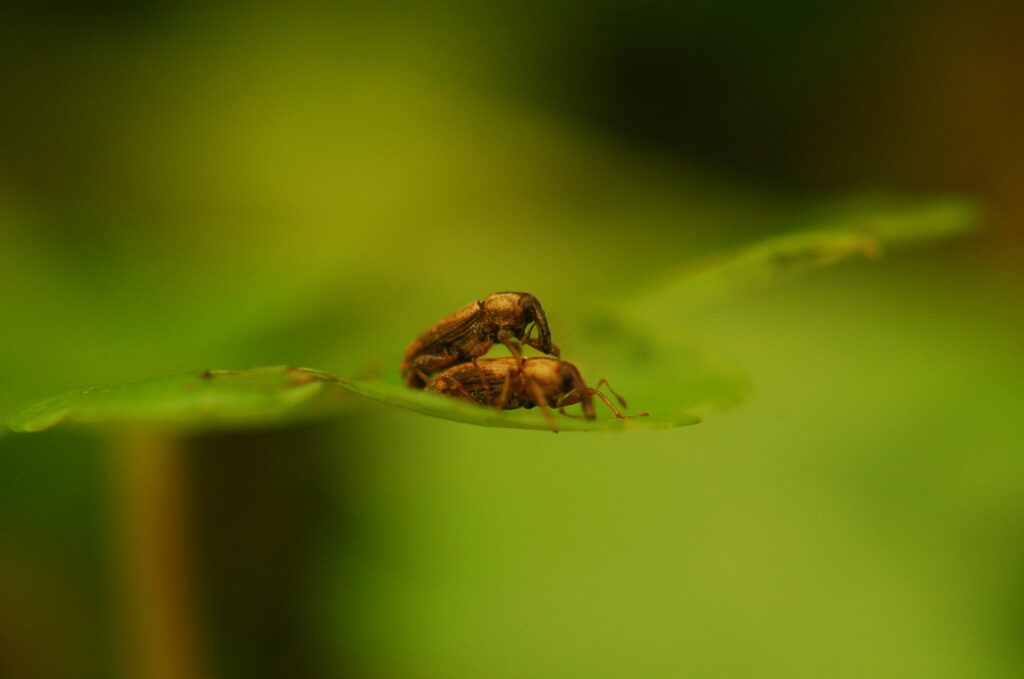
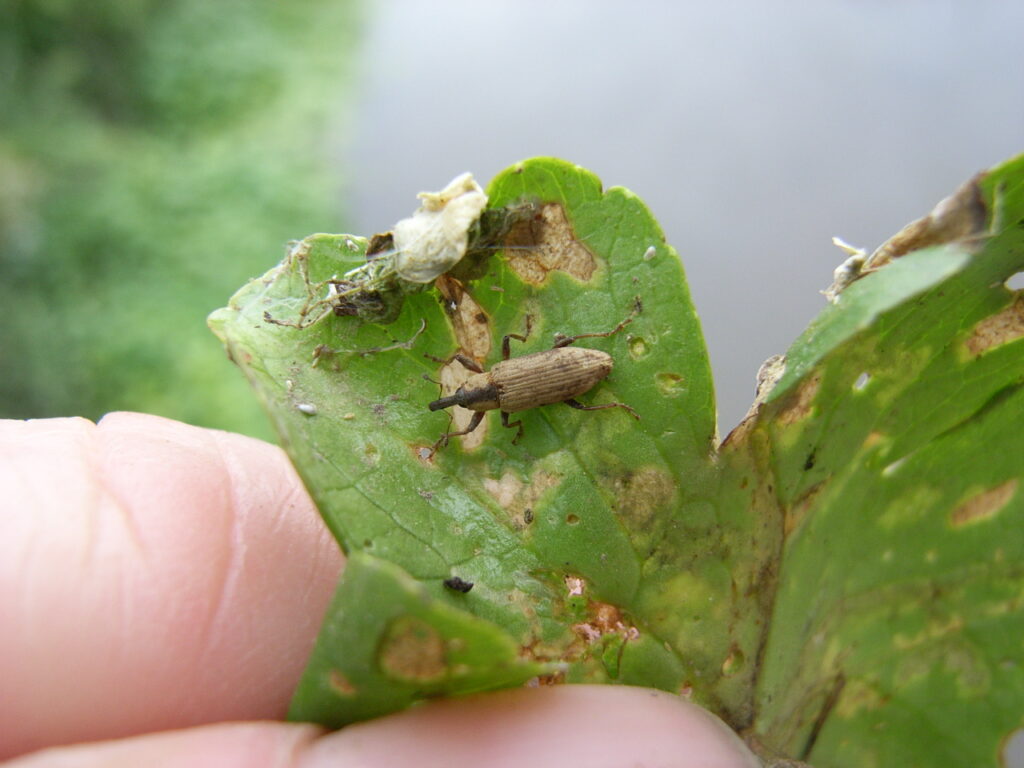
Project-specific articles, reports and papers
Cabrera Walsh, G., & Maestro, M. (2017). Assessing the specificity of a herbivore on a plant of uncertain phylogenetic placing: Listronotus elongatus a herbivore of Hydrocotyle ranunculoides. BioControl, 62(2), 269–279. doi: 10.1007/s10526-017-9785-0
Cabrera Walsh, G., Maestro, M., Dalto, Y. M., Shaw, R., Seier, M., Cortat, G., & Djeddour, D. (2013). Persistence of floating pennywort patches (Hydrocotyle ranunculoides, Araliaceae) in a canal in its native temperate range: Effect of its natural enemies. Aquatic Botany, 110, 78–83. doi: 10.1016/j.aquabot.2013.05.011
Cordo, H. A. (1982). The weevils Lixellus, Tanysphiroideus and Cyrtobagous that feed on Hydrocotyle and Salvinia in Argentina. The Coleopterists Bulletin, 26(2), 279–286. Retrieved from https://www.jstor.org/stable/4008066
General
CABI. Progress with Weed Biocontrol Projects. November 2023
CABI. Progress with Weed Biocontrol Projects. March 2023
CABI. Progress with Weed Biocontrol Projects. November 2022
CABI. Progress with Weed Biocontrol Projects. May 2022
CABI. Progress with Weed Biocontrol Projects. November 2021
CABI. Progress with Weed Biocontrol Projects. March 2021

